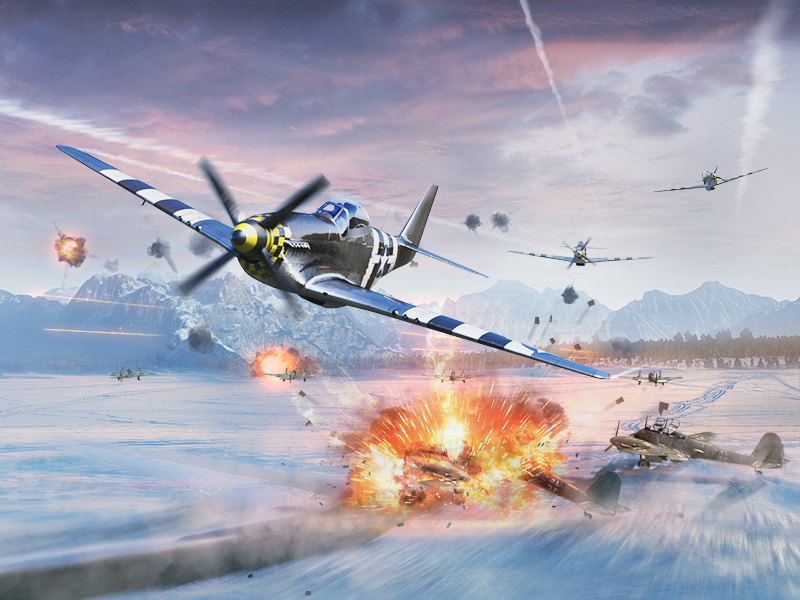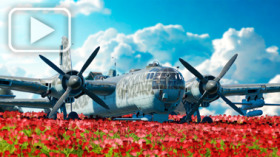
- For PC
- For MAC
- For Linux
- OS: Windows 7 SP1/8/10 (64 bit)
- Processor: Dual-Core 2.2 GHz
- Memory: 4GB
- Video Card: DirectX 10.1 level video card: AMD Radeon 77XX / NVIDIA GeForce GTX 660. The minimum supported resolution for the game is 720p.
- Network: Broadband Internet connection
- Hard Drive: 17 GB
- OS: Windows 10/11 (64 bit)
- Processor: Intel Core i5 or Ryzen 5 3600 and better
- Memory: 16 GB and more
- Video Card: DirectX 11 level video card or higher and drivers: Nvidia GeForce 1060 and higher, Radeon RX 570 and higher
- Network: Broadband Internet connection
- Hard Drive: 95 GB
- OS: Mac OS Big Sur 11.0 or newer
- Processor: Core i5, minimum 2.2GHz (Intel Xeon is not supported)
- Memory: 6 GB
- Video Card: Intel Iris Pro 5200 (Mac), or analog from AMD/Nvidia for Mac. Minimum supported resolution for the game is 720p with Metal support.
- Network: Broadband Internet connection
- Hard Drive: 17 GB
- OS: Mac OS Big Sur 11.0 or newer
- Processor: Core i7 (Intel Xeon is not supported)
- Memory: 8 GB
- Video Card: Radeon Vega II or higher with Metal support.
- Network: Broadband Internet connection
- Hard Drive: 95 GB
- OS: Most modern 64bit Linux distributions
- Processor: Dual-Core 2.4 GHz
- Memory: 4 GB
- Video Card: NVIDIA 660 with latest proprietary drivers (not older than 6 months) / similar AMD with latest proprietary drivers (not older than 6 months; the minimum supported resolution for the game is 720p) with Vulkan support.
- Network: Broadband Internet connection
- Hard Drive: 17 GB
- OS: Ubuntu 20.04 64bit
- Processor: Intel Core i7
- Memory: 16 GB
- Video Card: NVIDIA 1060 with latest proprietary drivers (not older than 6 months) / similar AMD (Radeon RX 570) with latest proprietary drivers (not older than 6 months) with Vulkan support.
- Network: Broadband Internet connection
- Hard Drive: 95 GB
1280x1024 | 1920x1080
From December 16th 13:00 GMT to December 17th 13:00 GMT
battle of the bulge:
20% off for
P-51D-30 Mustang
Typhoon Mk 1b/Late
Bf 109 G-10
Torwards the end of 1944 Wehrmacht forces were exhausted by a series of defeats on both Eastern and Western fronts, as well as devastating Allied bombing raids, that had crippled German military and industrial infrastructure. American and British troops already reached the borders of Germany itself. However, facing considerable supply issues they were unable to deliver reinforcements to the front lines quickly, and thus had to stop the advancement into the hilly and forested area of Ardennes by the middle of December 1944.
The German generals were desperately looking for a possibility to turn the tides of the campaign on the Western front. As History shows, took the pause in the Allied advance needed for regrouping for a sign of weekness. Hitler wanted to repeat the success of the 1940 strike against the French army when a great German force suddenly traversed the Ardennes forest to flank the French troops entrenched on the Maginot line. However, the Allies anticipated this move and decided to entrap the enemy armies. First by luring them deep into the impassable mountain areas with only few roads available to supply the advancing troops. Then by cutting them off with two swift strikes by mobile groups deployed to the North and South.
The German offence began on December the 16th and by December the 24th Wehrmacht units advanced 90 km deep into the Allies territory. This temporary success was primarily achieved due to the low concentration of the Allied forces in the area; only 2 American infantry divisions faced the initial assault of the elite German panzer armies equipped with the newest Tiger II heavy tanks. One of them was the famous 101st Airborne, that defended the city of Bastogne from the overwhelming German forces of the 2nd Panzer Division and Panzer-Lehr-Division of XLVII Panzer Corps for eight days. Another reason were the weather conditions that hampered the British and American aviation actions for the first days of the German assault.
However on December 24th the heavy winter weather cleared. This allowed allied Typhoon and Thunderbolt attackers to strike the German supply routes and the C-47 transport aircraft to deliver the much-needed supplies to besieged Bastogne defenders. The Allies launched a counteroffensive, surrounding the 2nd Panzer division and forcing the rest of the German troops to retreat. By January the 29th the German offence had been defeated completely.
The Battle of the Bulge costed the Germans up to 85000 men, more than 600 tanks and thousands of aircraft. The Wehrmacht lost the strategic initiative once and for all.




